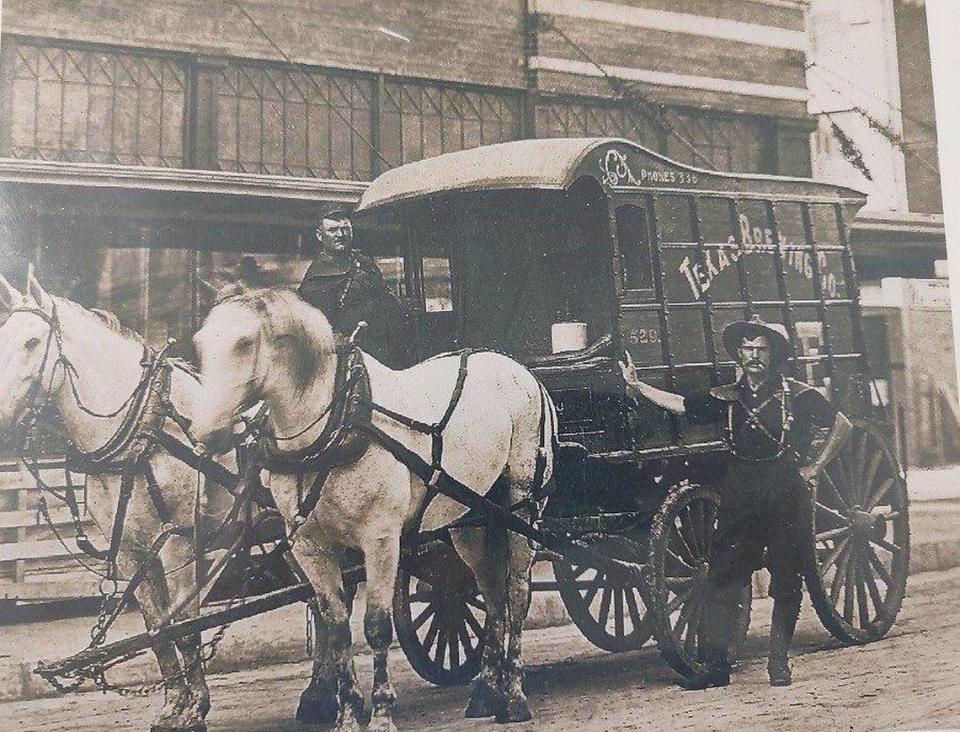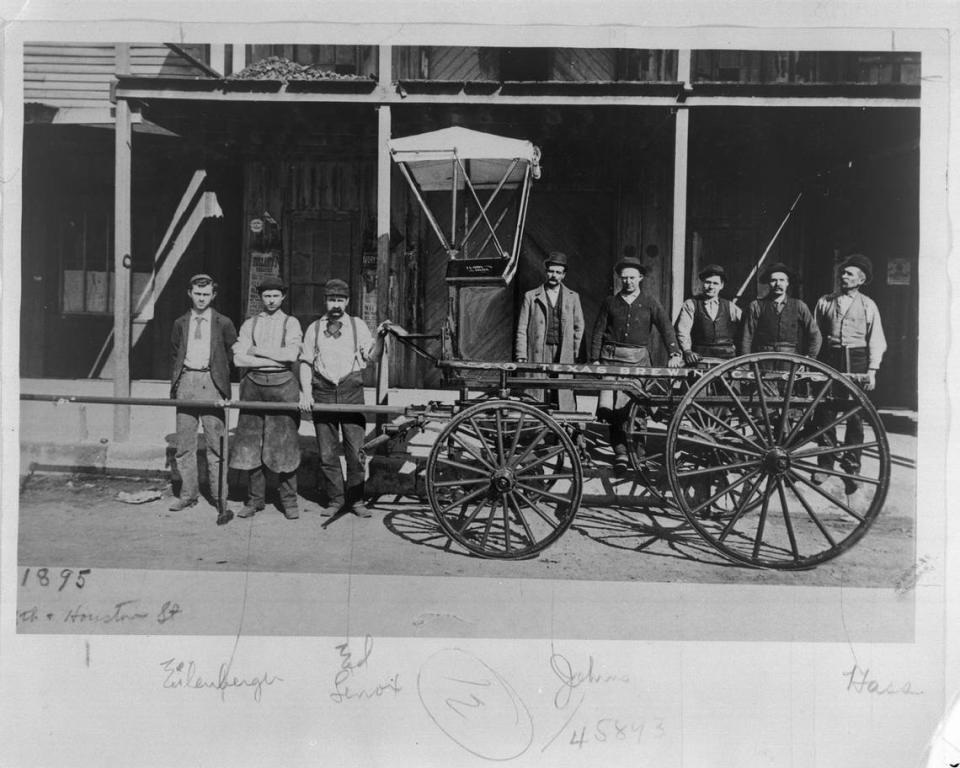Prohibition forced this thriving Fort Worth brewery into the cold storage business
The late Mike Nichols — a contributor to this history column space — wrote about the old Texas Brewing Co. in his book “Lost Fort Worth” (2014) and his “Hometown by Handlebar” blog. But Mike never delved into what happened to the place after it closed in 1918. That’s an interesting story by itself.
The company opened in 1891 as Fort Worth’s first heavy industry, years before the packing plants and King Candy Co. Located on Jones Street — the edge of Hell’s Half-acre — it stretched three blocks from Ninth to Twelfth streets. It was a complete operation with its own artesian wells, refrigeration plant and horse stables, and even made its own bottles and barrels. It also had a barroom for walk-in business and a gift shop. It was a favored stop for every out-of-town convention that came to Fort Worth.
The local business community was so happy to have Texas Brewing Co. locate here that the Board of Trade came up with $10,000 to entice the brewery’s local investors, who included Jesse Zane-Cetti, to build it. The biggest attraction next to the “bonus” was the quality of the water under Fort Worth. Breweries only go up where there’s top quality water. The company went into full production on May 18, 1891, delivering their bocks and lagers to the city’s eager saloons.
Texas Brewing Co. wagons fanned out across town each morning with bottles and barrels of beer. The product was good enough that the company soon had 96 distributors in Texas and was shipping out of state. In the next couple of years, the company carried out a $200,000 expansion, making it the largest brewery in Texas, if not in the Southwest. By 1907, the company was producing 250,000 barrels of beer a year.

The good times came to a halt in 1918 as Prohibition (the 18th Amendment to the Constitution) approached. Breweries either had to close or find another product line. At noon on May 21, Deputy Internal Revenue Collector R.C. Cain oversaw dumping all the beer on hand into the sewers. A month later, Cain oversaw an auction on the steps of the federal building to sell off all confiscated beer and liquor. Buyers were free to take their purchases home for personal consumption but not resell it. A Universal Studios cameraman was there to record the historic moment. Those who believed in karma or fate may have felt the man who stole their happiness got what he deserved when Cain was run over by a streetcar and killed a few years later.
When Texas Brewing Co. shut down, it employed 400 men, most of whom were unceremoniously laid off. The residential area around the plant was as somber as if the plague had just come through.

Zane-Cetti, president of the company, huddled with his officers to figure out what to do next. The first order of business was to sell off the stock of “bar fixtures.” Counters, mirrors, ice boxes, cash registers, and cigar cases went at fire-sale prices. They were not done, though.
Then the company followed the same playbook as other breweries across the country. They reopened as the Texas Beverage and Cold Storage Co. Their two, 50-ton De La Vergne ice machines could produce 175 tons of ice a day, and the beer storage vaults were turned into cold storage for Swift and Armour’s dressed meat and eggs from wholesalers such as the Fort Worth Poultry & Egg Co.
It took a little time to get the new operation up and running, and there were some bumps along the way. In February 1919, the Texas Food and Drug Department forced them to destroy 58 cases of eggs found to be “not fit for consumption as food.” They survived that blow to their finances and their reputation to keep the packing plants’ and egg companies’ business.
A new presidential administration and the repeal of Prohibition arrived in 1933. It was not just the Democrats who were singing “Happy Days Are Here Again.” Breweries were back in business. The brew masters had long since moved on (some returning to Germany), but a few of the former employees were still around, including Texas Brewing Co.’s W.L. LeBow, a warehouseman, Buster McQuinn, in cold storage, and Ike Fear, in engineering. They were eager to return to brewing. Another former Texas Brewing Co. employee who would outlast them all was Oscar Crook, a porter who came to work in 1899 and stayed on through the company’s successors for the next 60 years before finally retiring in 1959.
With new management and a new workforce, the old brewery reopened as Superior Beer in October 1933, producing 3.2 percent beer in bottles. In the next two years, the company added draught beer to its product line. Superior even got the stamp of approval of the New Deal with the “blue eagle” of the National Recovery Administration, which they displayed in their advertising. The new brew had something else going for it. It was no longer just for men and women of low character.
Superior marketed to the ladies with the promise that its beer was “absolutely NOT fattening.”
Superior aimed to capture the hometown market, advertising itself as “Fort Worth’s Own Brewery,” organized by “Fort Worth men” and “paying its entire payroll to citizens of this community.” The only outsider in the business was a Belgian brew master. And Superior was a union shop, which in a time of labor strife across the country never had any labor troubles.
Unfortunately, Superior Beer did not live up to expectations. By 1940 it was out of business. Much of the old Texas Brewing Co. plant was empty, but management made one last attempt to return to the glory days of old. In 1940, they began producing Lamsen’s Cola-Beer, an awful concoction of “malt brewed and fermented” then “supplemented with a cola taste and flavor.”
They touted this Frankenstein of brews as “the best drink of the century.” No surprise, Cola-Beer did not last long, and the old Texas Brewing Co. plant was finally closed for good.
The last part of the plant still standing (the corner of Jones and Ninth) was finally razed in 1953 to make way for a parking lot. The sprawling property of Texas Brewing Co. was eventually cleared and repurposed as the Santa Fe warehouse and city transit center.
Author-historian Richard Selcer is a Fort Worth native and proud graduate of Paschal High and TCU.

